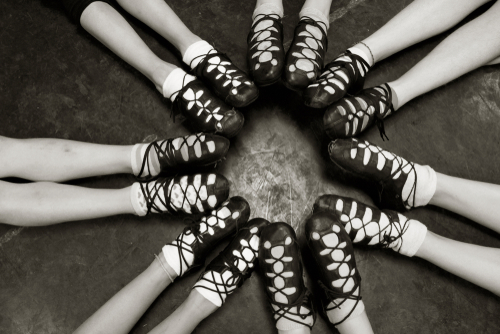 A symmetry operation has to do with moving a shape through space in various ways and repeating the shape. The pattern is created through repetition. In rotational symmetry, shapes are moved in equal distances around an imaginary axis. For example, flower petals arrayed around the center of the blossom have rotational symmetry.
A symmetry operation has to do with moving a shape through space in various ways and repeating the shape. The pattern is created through repetition. In rotational symmetry, shapes are moved in equal distances around an imaginary axis. For example, flower petals arrayed around the center of the blossom have rotational symmetry.
Circle dances performed by a group are the most obvious example of rotational symmetry. But a soloist can also create rotational symmetry simply by making a series of quarter turns and repeating an action or pose.
The axis of rotation can be oriented in different directions. The early movie director Busby Berkeley enjoyed changing the camera’s angle to create different symmetrical patterns. He would arrange supine dancers in a circle on the floor, then film their movements from above.
